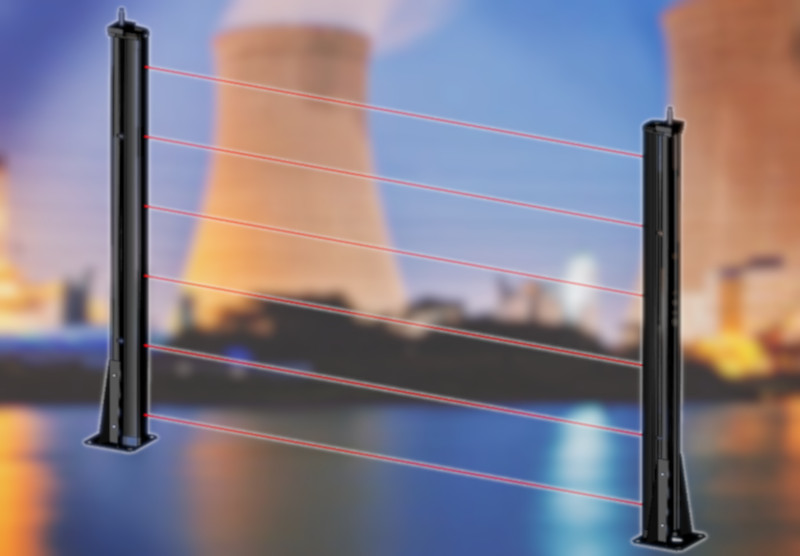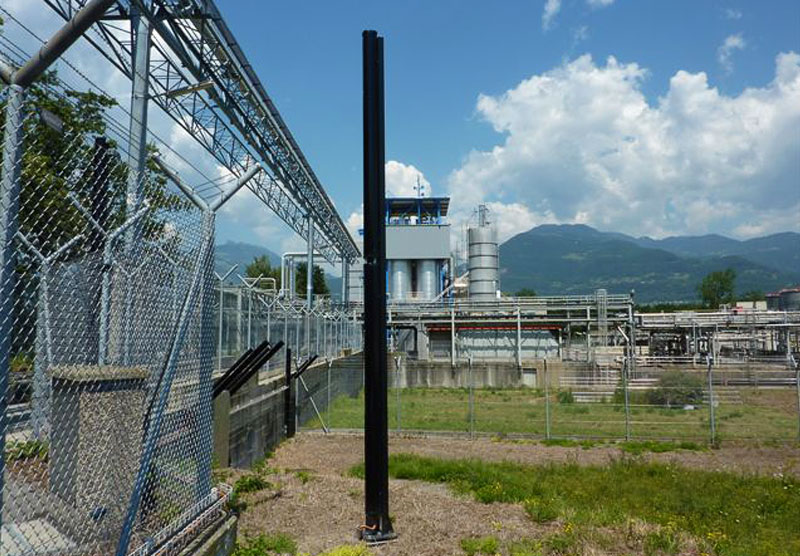Hard-wired High Security Networked IR Barrier
Approved by the USAF for Protection Level 1 Nuclear & Below
MODULARITY : Two different housings to adapt to different site configurations
INNOVATION : ZONING function, TCP/IP network for remote set-up and maintenance
ADAPTABILITY : Single or double face; Single or dual direction; Adaptable column heights
Overview
The MAXIRIS 3100 infrared barriers deliver the highest level of performance in invisible/virtual fence systems from PROTECH. For perimeters longer than .6 miles (or 1 km), the MAXIRIS 3100 columns can be directly connected to a TCP/IP network or RS485 bus via the MAXIBUS Universal Hub.
The MAXIRIS ZONING function enables up to three virtual detection zones per barrier/ system that can be configured accordingly, allowing for video verification based on alarms by zone.
Each barrier is self-contained with a multi-lingual HTML server integrated into each column (English, French, Spanish, etc.).
System configuration and maintenance operations can be handled remotely.
MAXIRIS 3100
- Single and double face tower
- High-density beams: up to 14 beams per tower face
- Zoning function: minimum of 4 to maximum of 10 cells per tower
- Zoning function: 4 to 10 cells per tower
| MAXIRIS 3100 | |
| Maximum interior range | 1,640 ft./500 m |
| Maximum exterior range at all times | 328 ft./100 m |
| Column height | 3.2 ft.(1m) - 5ft (1.5m) - 6.5 ft.(2m) - 8 ft.(2.5m) - 10 ft.(3m) |
| Intrusion alarm information | Up to three intrusion areas with distance from each configurable area |
| Alarms provided | Intrusion (up to 3 zones), Disqualification, Tamper, Anti-climbing, Technical default |
| Alarm outputs | RS-485 on each MAXIBUS Universal compatible tower Ethernet (RJ45 on each tower) compatible with MODBUS TCP server/client Dry contact outputs: 2 relays (NC) per tower (configurable assignment) |
| Power supply | 24/48VDC - Optional 110 VAC - 60 Hz |
| Alignment aid tools | Audible and visual signals on all the towers |
| Operating Temperature | -40°F to+158°F (-40°C to+70°C) thermostat-controlled heater on each tower |
| Electromagnetic compatibility | Compliant with European standards (CE label) |
| Configuration tools | HTML server integrated into each tower (local access) |
| HTML server functions | • Password protected • Read/writing of parameters • Log and real-time infrared-beam status display |
Ensure barrier is installed on a stable support (not mesh, unstable pole, etc.).
Ensure ground is level to ensure stability of the columns over time. A maximum of 10° elevation will be tolerated between the columns. In elevations above 10°, contact PROTECH’s sales department.
Ensure site is free from vegetation that could cover the beams, regardless of the season / weather.
Check the cleanliness of the covers. Recommended to clean with a soft and damp cloth at least annually.
Infrared technology operates at a wavelength above that of visible light (950nm), which makes the IR beam invisible to the naked eye.
IR beams are transmitted and received by infrared cells – transmitter cells generate and send a pulsed beam to the receiver cells which capture infrared pulses and turn them into electrical signals. When an absence, loss or change in the signal occurs (loss of 95% of the transmitted signal), an intrusion alarm is triggered. To prevent interference of receiver cells by the infrared beams being transmitted, cells are multiplexed.
Multiplexing is a principal whereby infrared pulses are transmitted in a synchronized manner by an optical or wired link between transmitter and receiver columns. This feature optimizes cell alignment (“alignment feedback”). All the PROTECH IR barriers are multiplexed.




